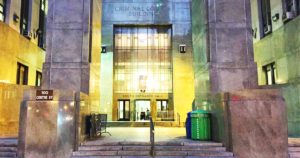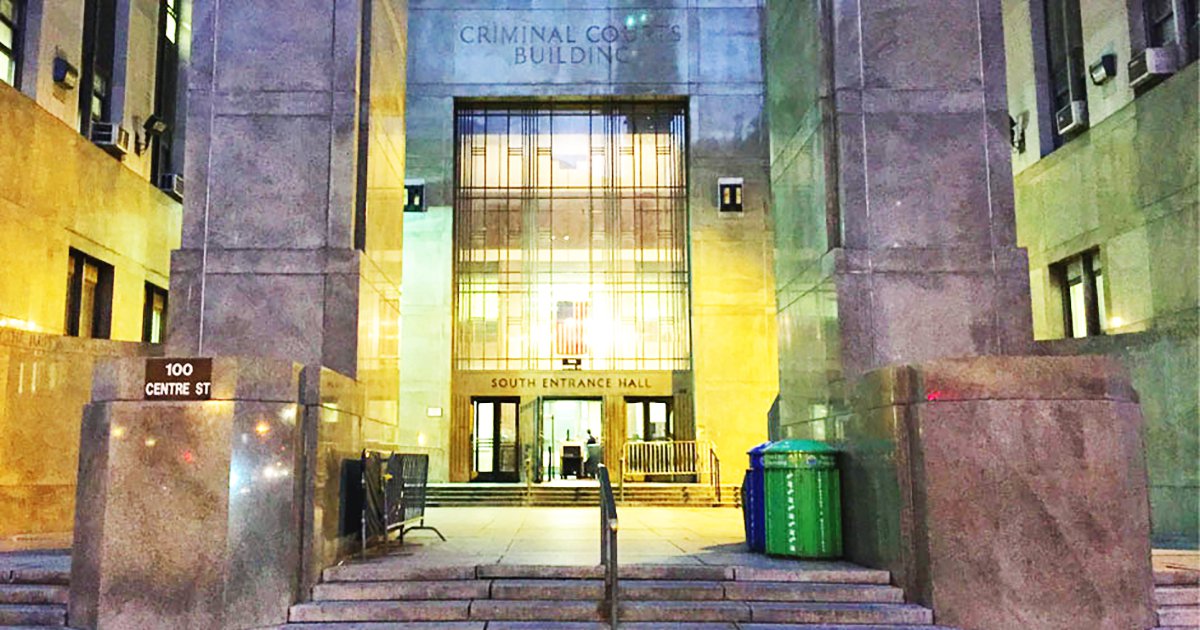
Every night, between the hours of 5 p.m. and 1 a.m., a palpable cloud of hopelessness and despair hangs thick over the defendants of New York City’s criminal court. The familiar scene of primarily unkempt, poverty stricken, mostly non-white citizens awaiting their bail hearings was disturbingly juxtaposed on a recent Monday night by the nonchalant chattering of the in-house lawyers, judges, and safety officers whose bodies, if not spirits, could be observed occupying the same space.
“There’s not much to report in there,” a public defender said, indicating the court room that would soon decide the fate of 11 living, breathing individuals.
Nowhere in America is the systemic idea of the “undeserving poor” more easily evident and realized than in a $10,000 bail decision levied against a homeless drug-addict. Ten out of 11 defendants on trial at New York City’s criminal court this night were ethnic minorities. Three out of 11 were homeless. All cases ,but two addressed drug crimes, and all cases but one, resulted in the judge’s advancement toward prosecution.
A young Latina woman’s grandmother wept quietly to herself in the third row of the wooden benches, as her terrified granddaughter Amanda entered the court chambers before the proceeding began. Just beside Amanda, an unaffected officer killed time by conversing with an off-duty lawyer and munching on candy, merrily indifferent to the emotional temperature of the room in a perfect display of the business-as-usual mentality of the American criminal justice system.
While the United States represents only five percent of the world’s population, it is responsible for 21 percent of the world’s population of prisoners. Research also strongly suggests a racial/economic status bias in bail decisions. The system is flawed and, for a prime opportunity to see this inequity in action, one needs to look no further than the TripAdvisor verified tourist spot known as New York City’s night court.
As her family watched on, Amanda awaited a crack-cocaine sentencing, the mounting anxiety of every passing minute visible on her face. Conversely, the public servants holding her future in their hands milled about their night in no apparent rush, before ultimately settling on a $10,000 bail amount and a trial date. In an instant, Amanda was reduced to yet another data point in the radically disproportionate statistic of America prosecuting its ethnic minorities.
The night continued on, as case after case saw people of color and the impoverished fall victim to the glaring statistics. In a country where two-thirds of those arrested are white, but two-thirds of those incarcerated are black, it was little surprise that every African-American facing a drug sentence received consequences in the form of hundreds of dollars in fines or thousands of dollars in bail.
One African-American man, arrested earlier in the day at Marcus Garvey Park, pled guilty to possession of a dime-sized bag of marijuana and was forced to pay a $225 fine. This penalty stands in stark to contrast to another hearing from just last week, when a white NYU student who had gotten caught smoking marijuana received nothing but a reprimand from a night court judge to “not do it again.”
This leniency was not extended to Melissa, a 28-year-old homeless woman who had unwittingly sold crack-cocaine to an undercover officer. On Monday, she stood in defeat before the judge after her lawyer failed to lessen the $10,000 bail appointed to her.
“She had two pipes on her,” her lawyer stated. “She’s not only selling crack to live. She’s also a drug addict. My defendant is 28-years-old and has never been convicted of a crime.”
Obtaining enough food and water just to make it through the day is a daily struggle for drug-addicted Melissa, who now has an absurdly unattainable $10,000 bail price hanging over her head. With very little chance of rehabilitation in jail, it is more than likely that Melissa will ultimately return to the streets, a felony holder still addicted to crack-cocaine and a product of a criminal justice system that overwhelmingly favors the economically elite. Meanwhile, the white and/or wealthy young people across the city, who enjoy a more-expensive form of the same drug that has ruined Melissa’s ’ life, will continue to snort lines in dorm rooms and nightclub bathrooms without any real fear of having to answer for their own drug infractions.
The last hearing of the night belonged to a friend of Amanda’s, 20-year-old Jose. Sitting slumped next to a police officer, the young man was seemingly well-aware of the harsh inevitability of his conviction. His parents, exuding a bit more outward confidence, could be seen gesturing toward their son in an apparent attempt to inspire hope of a near-statistical impossibility, whilst presumably suppressing their own feelings of anguish.
Melendez’s parents pleaded with their legal aid lawyer to attempt to get their son released, as they simply did not have the thousands of dollars required to pay his bail.
Their hopes were dashed before Jose even had a chance to stand before the judge. Throwing on his puffer vest and NorthFace coat, their son’s court-appointed lawyer cut a swift line toward the court’s exit doors. It was almost 1 a.m.. and he was apparently off-the-clock.
“I’m going home,” the lawyer informed them. “That lawyer is going to take over your case.”
Jose is now awaiting his criminal trial in a jail cell.
(Last names have been withheld to protect the accused)








